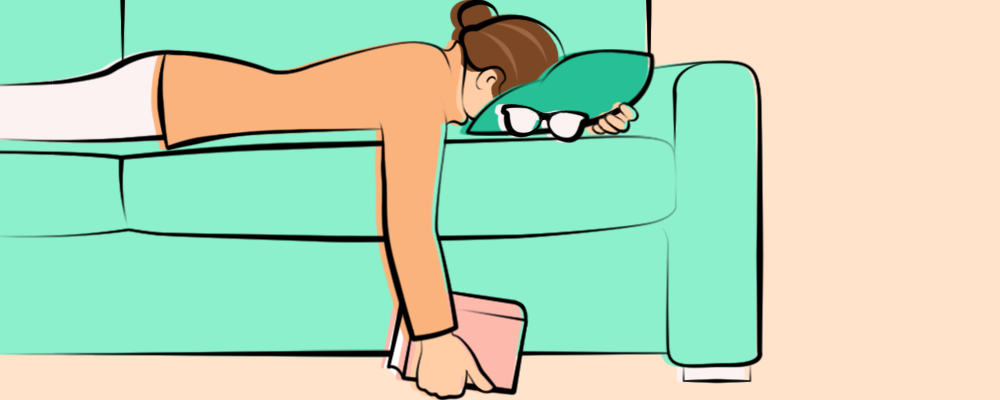When you suffer from migraines, there’s only so much that treating the symptoms can do. Sure, it’s great if you can numb the headache caused by a migraine attack, or stop the nausea that comes with it, but ideally you’d want to prevent the migraines from happening in the first place (if you can).
So that’s where migraine prophylaxis comes in. Also referred to as migraine prevention therapy, prophylaxis involves taking a course of regular treatment designed to prevent migraine attacks from occurring.
This is different to pharmaceutical acute treatment, which is taken only as and when migraine symptoms kick in. The aim of migraine prophylaxis is to make migraine symptoms occur less often, and/or reduce their severity.
If you live with frequent or chronic migraines, prophylaxis could be a good solution for you. Keep reading to find out everything you need to know about prophylaxis, including which treatments are available and how they work to treat your pain.
Who should consider prophylaxis?
If you suffer from a chronic migraine condition, you may already be taking prophylactic medication or have discussed it with your doctor.
According to classifications published by the International Headache Society, you have chronic migraine if you get a headache at least 15 days per month for more than 3 months, and if you experience typical symptoms of a migraine for at least 8 of those days.
As the pain and discomfort caused by chronic migraine is so disruptive to everyday life, many patients will attempt to treat their migraine with acute medication — ibuprofen, for example. The problem is, an overuse of these types of medications can actually cause worse headaches, known as ‘rebound headaches’, caused by manipulating the pain receptors in the brain (more on this later!). That’s why chronic migraine patients may benefit in particular from prophylaxis: taking preventive measures can reduce the need for acute medication.
If your symptoms don’t fit the classification of chronic migraine, but you still suffer from repeated attacks of migraine (although less frequently), you might be described as suffering from episodic migraine. If this is the case, it’s likely you’re also using pharmaceutical medication on a regular basis, and therefore migraine prophylaxis may also be a more suitable option.
Why use prophylaxis over acute pharmaceutical medications?
As mentioned above, people who suffer from chronic or frequent episodic migraines typically lean on pharmaceutical acute medications to control their symptoms. But you should know that it’s not generally safe to use these acute medications more than two days per week.
After all, the more you use pharmaceutical acute treatments, the greater the risk you have of experiencing side effects. These vary by medication, but a particular concern with some acute treatments is the possibility of developing medication overuse or ‘rebound’ headache.
Medication overuse headache occurs when receptors in your brain are affected by the regular use of acute migraine medications, influencing the way you process pain. This can result in a continuous pattern of headaches.
People who suffer from this will have to stop taking the overused medication. But this can be an unpleasant process too, because migraine symptoms can worsen when you stop. It’s truly a vicious cycle!
Prophylaxis offers an alternative to the regular use of acute treatments, reducing the chance of triggering medication overuse headache. The decision to start migraine prophylaxis is not taken lightly, though. Prophylactic treatments may take up to 3 months to work, and they can also cause side effects, too.
Common migraine prophylaxis treatments and their risks
Interestingly, most drugs used for migraine prophylaxis were initially developed for other uses. These include Botox®, beta-blockers, antidepressants, and antiepileptics.
Prophylactic medications are usually started at a low dose, and are gradually increased until an effective but well tolerated dose is reached.
The National Institute for Health and Care Excellence (NICE) in the UK recommends that prophylactics are tried for at least 3 months at the maximum tolerated dose, before any judgement is made regarding the effectiveness. So if you want to switch to preventative treatment, that’s something to consider.
But how will you know if you’ve found a prophylaxis that works for you?
A prophylactic is thought to be successful if it halves both symptom severity and the frequency of attacks. And if a treatment is not working, another may be tried.
Once you are on a programme of prophylactic therapy, your doctor will review it periodically. Then, depending on your tolerance, they might suggest gradually withdrawing the treatment again after 6 months or a year.
So now you know how they work, let’s go ahead and break down some of the various migraine prophylaxis medications out there:
Botox®
Yes, really: that Botox®!
Botox® (botulinum toxin A) is a toxin produced by a bacterium called Clostridium botulinum. When controlled amounts are injected into the skin, Botox® can be used to help reduce wrinkles. It does this by interfering with the nerve signals, triggering muscle relaxation. And although you may think that it’s Botox®’s ability to relax the muscles that helps prevent migraine, it’s actually more to do with the transmission of pain signals (although reducing tension in the muscles can’t hurt either!).
When botulinum toxin A is used to help prevent migraine, it is given by injections around your head and neck, and should always be administered by a specialist. So does it work? In one study, nearly 50% of Botox® users found their headaches had dropped in frequency by almost half, after only two rounds of treatment. Once they’d had five rounds of injections, almost 70% of participants saw the same migraine reduction!
Of course, there are some possible side effects of treatment, including pain at the site of the injections, and muscle weakness. Some people may also have an allergic reaction to the toxin, which is why it is important to consult your doctor before considering this treatment.
Beta blockers
Beta blockers are often used to treat high blood pressure, but they can also be used as preventative therapy for migraine. They act by reducing the activity of certain brain cells and a recent review of studies concluded that beta blockers reduce episodic migraine headaches by 1.5 headaches per month (essentially dropping the frequency a patient suffered a headache quite significantly).
Beta blockers used to prophylactically treat migraines include propranolol, metoprolol tartrate, atenolol, nadolol, timolol maleate, and bisoprolol fumarate.
Common side effects of beta blockers include dizziness, nausea and difficulty sleeping. More serious side effects are also possible, so your doctor will monitor your progress if you take this medication. A friendly reminder: beta blockers should not be used by people who suffer from asthma.
Antidepressants
The antidepressant medication ‘amitriptyline hydrochloride’ may be used to help prevent episodic or chronic migraine. It works by acting on serotonin (5-HT) receptors in the brain. Serotonin plays a role in pain processing in the brain. This factor, combined with a boost of wellbeing from increased serotonin, can help keep migraines at bay.
It’s worth noting, though, that amitriptyline can make you feel sleepy, so it’s best taken at bedtime. Other common side effects include constipation, dizziness, and dry mouth. What’s more, amitriptyline is not suitable for people with heart, liver or kidney problems.
You can also get side effects if you stop taking amitriptyline suddenly, so it’s always important to talk to your doctor if you are thinking of stopping it.
More severe side effects are possible with this medication, which is why you must consult your doctor before taking it. In fact, whilst studies do claim these drugs to be effective in treating migraine, the “side effects burden of antidepressants can be substantial”. In short, it’s probably worth trying other prophylaxis first.
Antiepileptics
Sodium valproate, topiramate and gabapentin are antiepileptic medications that are also used to help prevent migraines. It’s thought that they may reduce the transmission of pain signals by nerves in the brain, and researchers have found that antiepileptics like valproate can reduce migraines by as much as 50%, although it can take several months to see results.
Common side effects of these antiepileptics include sleepiness, diarrhoea and feeling sick. Your doctor will monitor you for these and for any more serious side effects.
Sodium valproate can cause developmental problems in unborn babies and should not therefore be used in women who could become pregnant.
CGRP antibodies
There is one type of medication that has recently been developed specifically for migraine prophylaxis: CGRP antibodies.
These are injectable antibodies which either bind to CGPR (Calcitonin Gene-Related Peptide) molecules or block their receptors. In doing so, CGRP antibodies inactivate CGRP molecules, which is important, as these are released by the nerves and blood vessels in your brain during a migraine attack.
CGRP antibodies are typically injected every monthly or every three months. And studies have shown that they can be effective in reducing both the frequency and severity of migraine attacks.
However — and this will be a deciding factor for many patients — these antibodies are more expensive than other treatment options, and they may not work for everyone. In fact, one study found that CGRPs were only able to treat 1 in 6 patients (a disappointing performance compared to other medicines).
If you think you might benefit from CGRP antibodies, you will need to discuss with your doctor whether they are the right option for you.
Your personal plan for managing migraines
Although prophylactics are a valuable resource for anyone who suffers from repeated episodes of migraine, there is no one ‘best’ treatment plan.
The important thing for you, as a migraine sufferer, is to find the management plan which works for your individual symptoms. This may involve prophylactics and/or pharmaceutical acute medications and/or home remedies for that matter! Your doctor will be able to help advise you on what are the best and safest combinations of treatments for you.
Self-care, identifying and avoiding triggers, and maintaining an overall healthy lifestyle can all help to free you from the debilitating symptoms of migraine, too. What works for you will be different to what works for others. So focus on how you respond to different treatments — that way you may be able to find a medication that helps to reduce your chance of experiencing nasty side effects.
Always work with your doctor when building a new treatment plan, and be careful to avoid any treatments that overlap or interfere with each other. This could leave you feeling worse, not better!




